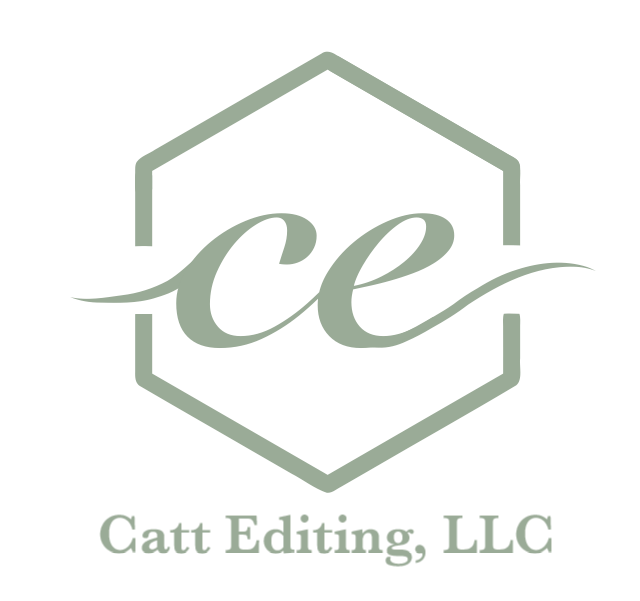What Is Copy Editing?
This blog post was written by Ceylan Ozguner of Oz Editorial Services.
Many people will tell writers that they need an editor, and that’s true. To create a polished masterpiece, not only is the self-editing and revising process necessary to improve your writing, it’s important to get another pair of experienced, professional eyes on your manuscript. While many people realize they need editing, most people don’t know that there are different kinds of editing. These include:
developmental editing
line editing
copy editing
proofreading
To learn more about these, check out this blog post.
If you want your book to become the best book it can be, it may be necessary to get more than one type of editing done. If you do that, make sure you get these done in the right order. If you don’t, you could end up wasting time and money on getting editing that your manuscript wasn’t ready for yet. So, developmental editing comes first, then line/copy editing, then proofreading. In this blog post, we’ll talk about the specifics of copy editing.
What Is Copy Editing?
So, what is copy editing, and why do you need it? Copy editing looks at the mechanics of writing:
the grammar,
punctuation, and
syntax in your manuscript.
Copy editing also includes making sure the writing is
coherent,
consistent, and
clear.
This is where diction choices and helping with the flow of the piece come into the picture, which some consider straying into line editing, but I include it as part of my copy editing services (as do many other copy editors). Many copy editors include basic fact-checking with their services. Things like checking the spelling of a brand’s name, how long it actually takes to drive from point A to B, if the stages of the moon line up with the timeline in a novel, and so on. This goes along with the consistency aspect of the job.
Style Sheet
A good copy editor will also create a style sheet to keep track of the writer’s style during a copy edit to ensure all the details are consistent within the manuscript. This includes things like keeping track of:
usage and style choices the author prefers (e.g., which style guide used, whether the author prefers Oxford commas, which numbers are spelled out, etc.)
character or other important names and attributes (so the copy editor can catch it if a character’s eye color randomly changes halfway through the manuscript)
a timeline (we don’t want three Tuesdays in a row listed in the book!)
a word list, which includes a list of words that the author spells a certain way or that aren’t listed in the standard dictionary used for book editing (Merriam-Webster’s Collegiate Dictionary or the more up-to-date online version)
Style sheets not only help copy editors keep track of what’s going on in a manuscript but also help the proofreader who checks for egregious errors after the book’s been laid out. They help ensure that those involved can also keep track of the details and the style decisions the copy editor already made. To learn more about this, check out this blog post.
How to Find a Good Copy Editor
Check with editing organizations, like the Editors Freelance Association (EFA) or the Society for Editing (ACES). They have directories of editors that have the functionality to search for editors by specialty. Some of these organizations also have a job list where you can post about your project and what you’re looking for so that interested and qualified editors can contact you. There are other organizations that have directories too, like the Northwest Editors Guild or CIEP, depending on where you’re located.
Get referrals! This is one of the best ways to find a good editor. Ask colleagues and friends, particularly writer friends who have worked with copy editors themselves.
When considering a copy editor, ask if they’ll do a sample edit for you. This way you can see what their editing style is like and if it gels with your style.
Why Hire a Copy Editor?
Even the best writers need copy editors. When we write and read back over what we’ve written, we tend to see what we thought we wrote rather than what’s actually on the page. It’s also easy to overlook small errors like extra or dropped words, homophones, or common misspellings. A copy editor serves as your second set of eyes and is specifically trained to catch these issues while applying all those tricky grammar and punctuation rules and cleaning up your prose.
Most importantly, a good copy editor knows how to do all these things while preserving your authorial voice. Readers can generally tell whether a book has been copyedited, as without it, they will find repeated mistakes and inconsistencies and see it as a sign of unprofessionalism. Nobody wants that, not the writer nor the reader. So make sure you hire an excellent copy editor for your book before you publish. You won’t regret it!
Ceylan Ozguner is a copy editor and proofreader who lives in Columbus, Ohio, with her partner. When she isn’t editing, you can find her reading a good book, exploring nature, or spending time with friends and family. Want to work together? Check out her website at ozeditorialservices.com or reach out at ceylano@ozeditorialservices.com.

